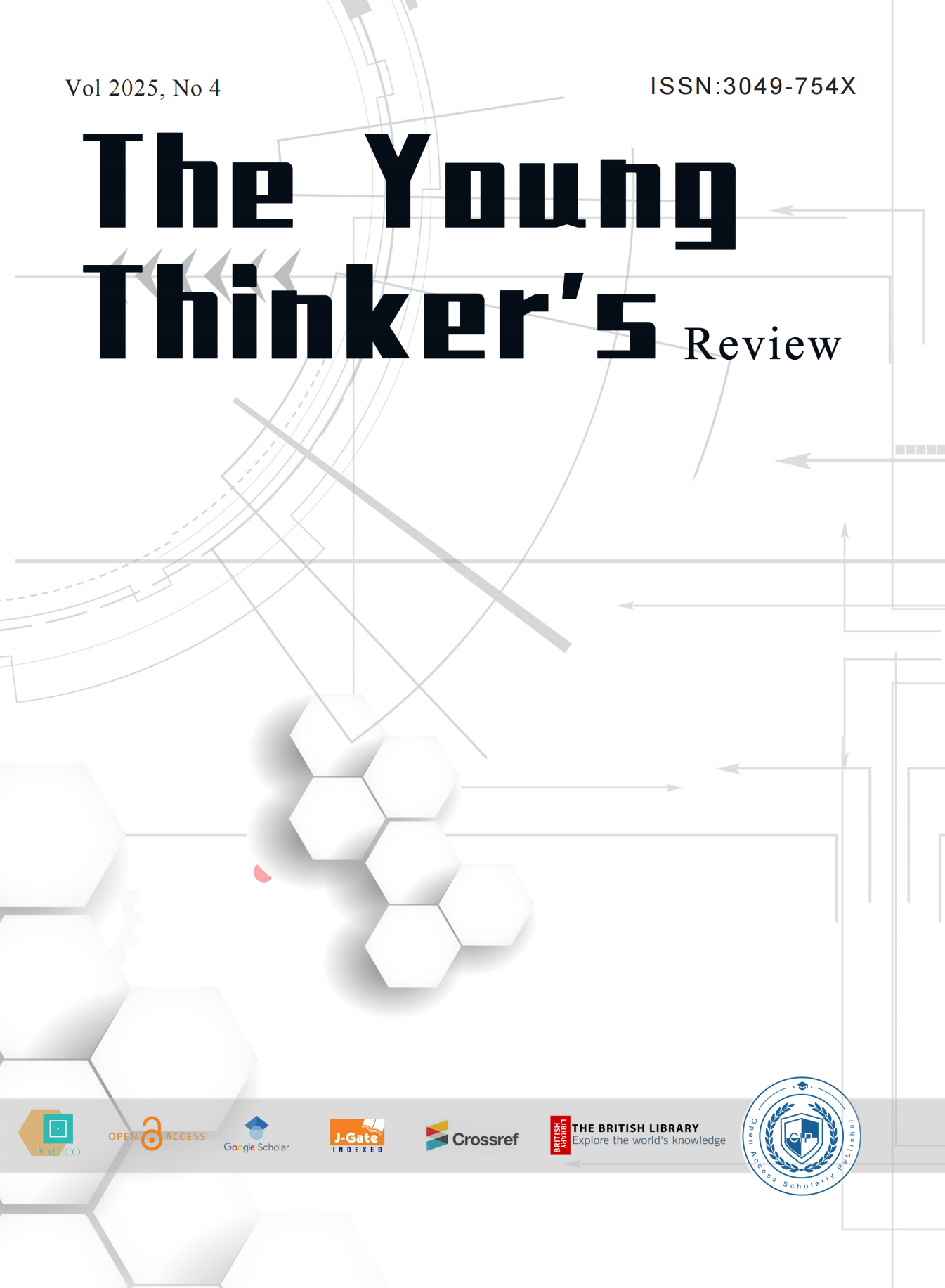Published 18-09-2025
Keywords
- Adolescents,
- Health Literacy,
- Acne,
- Nutrition
Copyright (c) 2025 The Young Thinker's Review

This work is licensed under a Creative Commons Attribution-NonCommercial 4.0 International License.
How to Cite
Abstract
Objective: To investigate the relationship between health literacy and nutritional cognition and behavior in adolescents with acne. Methods: A convenience sampling method was used to select 362 adolescents with acne as the research subjects. Health literacy and nutritional cognition and behavior were evaluated using a health literacy scale and a nutritional cognition and behavior questionnaire, and the results were analyzed. Results: The health literacy score of adolescents with acne was (72.8±9.6) points, and the total score of nutritional cognition and behavior was (38.6±7.2) points. There was a significant positive correlation overall(P<0.01). Multiple linear regression analysis showed that the three dimensions of health literacy (health literacy knowledge and concepts, healthy lifestyle and behaviors, and health skills) could jointly predict 55.6%of the variance in nutritional cognition and behavior. Conclusion: The level of health literacy in adolescents with acne is related to nutritional cognition and behavior and can effectively predict their nutritional cognition and behavior.
References
- Qiao Li, Zhou Jun, Ma Huiqun. Analysis of Risk Factors for Acne in Adolescents[J]. Chinese Medical Abstracts (Dermatology),2014,31(5):284-287
- Wen Li, Wen Xiaoyi, Xu Chengrong. Analysis of Influencing Factors of Acne Onset after Puberty[J]. Journal of Huazhong University of Science and Technology (Medical Sciences),2011,40(4):441-444
- Chang L C. Health literacy, self -reported status and health promoting behaviours for adolescents in Taiwan[J]. Journal of Clinical Nursing,2011,20(1-2):190-196
- Yu Xiaoming, Guo Shuaijun, Wang Lu. Structural Framework and Reliability and Validity Analysis of Health Literacy Evaluation Questionnaire for High School Students[J]. Chinese Journal of School Health,2014,35(5):672-675
- Yao Hongwen, Shi Qi, Li Yinghua. Current Status and Countermeasures of Health Literacy among Urban and Rural Residents in China[J]. Population Research,2016,40(2):88-97
- Liu Liu, Xie Suli, Guo Rui, et al. Study on the Relationship between Health Literacy and Health Service Utilization in Coronary Heart Disease among Middle-aged and Elderly Inpatients[J]. Journal of Nursing Continuation Education,2016,31(2):116-120
- Cheng Linan, Li Juan, Cui Wenxiang. Current Status and Progress of Research on Adolescent Health Literacy[J]. Chinese Journal of School Health,2015,36(6):954-958
- Wen Xiuqin, Han Zhengzheng, Zhao Jie, et al. Correlation Study between Health Literacy and Utilization of Basic Public Health Services among Community Hypertension Patients[J]. Chinese General Practice,2015,18(13):1518-1522
- Wei Wei, Li Yinghua, Li Fangbo, et al. Analysis of the Current Status of Health Literacy among Residents Aged 15–24 in China[J]. Chinese Journal of Health Education,2015,31(2):125-146
- Shi Yun, Ding Dapeng, Cui Jianping. Epidemiological Survey and Analysis of Risk Factors of Acne among Urban and Rural Adolescents in Southern Hebei[J]. Chinese Journal of Dermatology and Venereology,2008,22(10):611-613
- Cordainl, Lindebergs, Hurtadom, et al. Acnevul garis: a disease of Western civilization[J]. Arch- Dermatol.2002,138(12):1584-1590

